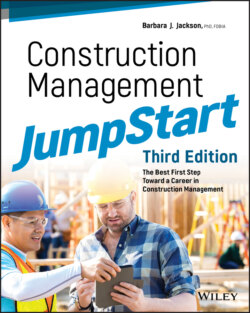Читать книгу Construction Management JumpStart - Barbara J. Jackson - Страница 30
specifications
ОглавлениеThe written instructions from an architect or engineer accompanying the project plans pertaining to the quality of materials and workmanship required for the project.
The industry began to recognize that the correlation between sound management techniques and successful building practices was very important to the success of a project. The ability to measure and monitor progress and economic effectiveness of the construction process became more important as projects became increasingly complex. Although the discipline of engineering had been tapped to provide the management function for years, a new distinction was being drawn.
As early as 1935, a new educational program that focused specifically on construction was popping up at a few universities across the country. These early programs eventually evolved into what is now recognized as construction management. The idea was to merge management principles, methodologies, and techniques with the art, science, and craft of building and create a unique educational experience. In addition to teaching building science, the program introduced estimating, scheduling, project controls, and project administration techniques.
In 1965, representatives from nine universities met in Florida to form the Associated Schools of Construction (ASC). This organization's distinct mission was to promote construction management as a legitimate and unique area of study at the university. The organization's goal was to establish a four-year degree program that clearly identified construction management as a recognized discipline among allied disciplines such as engineering and architecture.
Today, there are more than 160 four-year colleges and universities listed with ASC offering construction management curricula. The programs are typically identified as construction management, construction engineering, engineering technology, building science, or construction science, and they are often affiliated with colleges or schools of engineering, architecture, or technology. The educational opportunities available today are discussed in greater detail later in this chapter; see the “Educational Offerings” section.
